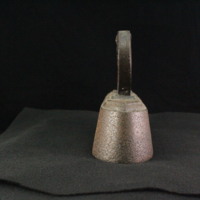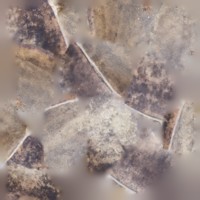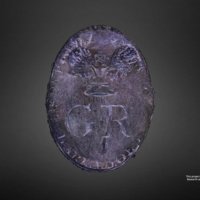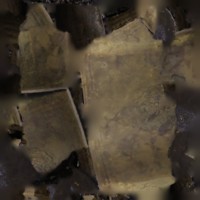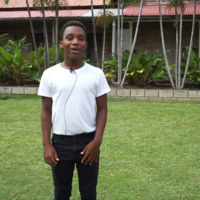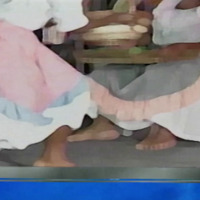Collection: Barbados Museum and Historical Society
Dublin Core
Title
Collection: Barbados Museum and Historical Society
Identifier
62
Collection Items
Giant South American Snail shell
The Giant Land Snail, Megalobulimus oblongus. A species of air-breathing land snail, a terrestrial pulmonate gastropod mollusk in the family Strophocheilidae. Native to a large part of the neotropical world including Argentina, Brazil, Columbia and…
West African heddle pulley
It was common for men to do weaving in West African countries. By means of heddle pulleys the weavers separate the warp threads into ‘fans’ by means of foot pedals. Then the weft threads are ‘shot through’ these ‘fans’. Thus, fabric is created. These…
Osprey
Barbados has long been an important stop over site for migrating birds on their southbound migration to South America where they pass the non-breeding (southern summer) season. Ospreys are migratory birds that eat fish. The Osprey (Pandion haliaetus)…
Toothkey / Turnkey
A Dentist tool from the 1800s, used to extract teeth. The claw would be fixed between the tooth and gum, and ideally then it would take one turn to remove the tooth.
"Margaret's Head" by Karl Broodhagen terracotta bust
Karl Broodhagen (1909-2002) Margaret’s Head 1955 Terracotta bust Karl Broodhagen (1909–2002) was a Guyanese-Barbadian artist, working mostly in sculpture and paint. Originally arriving to the island to become a tailor’s apprentice, he was awarded a…
Bell
This is a typical school bell, and is in the collection of the Barbados Museum & Historical Society as one of the visual indicators of the history of education on the island. The foundations of education in Barbados were laid by the philanthropic…
Whale Vertebrae plate
Humpback Whale vertebral plate. The shore whaling in Barbados started in 1867, primarily hunting humpback whales, which were known to frequent Barbados’ waters in the early part of each year as they migrate from the colder Northern waters of the…
Shell Man
This anthropomorphic figurine possibly depicts a carving of a bound ‘prisoner’. The artifact is made of conch shell and was discovered at Fresh Water Bay in St. Michael on the island’s West Coast.
Heddle pulley with carved head
It was common for men to do weaving in West African countries. By means of heddle pulleys the weavers separate the warp threads into ‘fans’ by means of foot pedals. Then the weft threads are ‘shot through’ these ‘fans’. Thus, fabric is created. These…
Wooden Dan Mask
The Dan live mostly in the western part of the Côte d’Ivoire and into Liberia. All Dan masks are sacred; they do not represent spirits of the wilderness, they are these spirits. Dan masks are characterized by a concave face, a protruding mouth,…
Monkey Jar
The monkey jar is a pottery jug used for holding drinking water and keeping it cool. This is because clay is a poor conductor of heat and since the jar is unglazed, water is able to evaporate from its surface to cool the jar. It is known for keeping…
Gibbs Face
This Amerindian artefact is most recognisable as a face that adorned the Barbados Museum and Historical Society’s logo
Tailor's goose iron
The tailor's goose iron was a long and thin iron, compared to its household counterpart, with handles that resemble that of a goose's neck. It was traditionally used by tailors for smoothing fabric and pressing seams. There were usually multiple…
Iron ball
The iron ball was part of punishment for enslaved people in Barbados. The ball would be fastened to a short chain that was shackled to an enslaved person’s legs. The enslaved person would have to continue labour whilst shackled to the ball, which…
Taíno Zemi
This small figurine is a Taíno Zemi. A Pre-Columbian artefact from the Taíno people who inhabited the Caribbean centuries before the arrival of the Europeans around 1492. They were wiped out by European colonialism. This figurine was an important…
Stone Scraper
Scrapers made from a variety of materials were popular tools for Amerindian communities. Scrapers are typically formed by chipping the end of a flake of stone in order to create one sharp side and to keep the rest of the sides dull to facilitate…
Amerindian Cassava Grater
The Cassava grater was part of the preparation process for Cassava by Amerindian communities. Jerome Handler, in his article “Aspects of Amerindian Ethnography in 17th Century Barbados” stated that: “ in processing the cassava, traditional Amerindian…
Tuk Band Penny Whistle
The pennywhistle or tin whistle is a musical instrument of the woodwind family. The modern pennywhistle originates in the British Isles, particularly England and Ireland. It is used in all manner of musical genre from Celtic to Jazz music. The…
Peregrine Falcon
The peregrine falcon (Falco peregrinus), also known as the peregrine,[2] and historically as the duck hawk in North America, is a widespread bird of prey (raptor) in the family Falconidae. A large, crow-sized falcon, it has a blue-grey back, barred…
Calabash bowl
Calabash bowl made from the fruit of the crescentia cujete tree and was used by the amerindian community.
Militia Badge
The Barbados Militia was raised in 1640 “for the defence and protection of Barbados.” and is probably one of the oldest in the British commonwealth, serving until British troops arrived in 1780. The main objective of the militias formation (as well…
Amerindian Shell
A shell found by Peter L Drewett that might have been a tool used to consume food with by the Amerindian community.
Police Badge
The main Police Force of Barbados was established in 1835. The Royal Barbados Police Force (RBPF), as established under the Police Act, of 1961, and the Constitution of Barbados is a part of the government responsible for local law enforcement. The…
Barbados Bullfinch/Sparrow
The Barbados bullfinch is a small bird, 14–15 cm (5.5–6 in). The upperparts are a dark olive-grey, the wings are mostly brown, underparts are greyish, while the under tail-coverts are tawny. The species is not sexually dimorphic, with females and…
Windrush
Barbados Community College
2018
Michelle Hinkson-Cox
Co-ordinator for the Theatre Arts Programme at BCC
Students
Brianna Gibbs
Danielle Sanson
Dylan Collymore
Malaika Croney
Melissa Hunte
Rayna Garnes
Romario Cottoy
Richenda…
Why is Telling the Windrush Story Important to You?
Barbados Community College
Students
Brianna Gibbs
Danielle Sanson
Dylan Collymore
Malaika Croney
Melissa Hunte
Rayna Garnes
Romario Cottoy
Richenda Harewood
Selena Williamson
Tamina White
Introduction to the Production of Windrush
Introduction and clips from Windrush.
2018
Barbados Community College
Michelle Hinkson-Cox
Co-ordinator for the Theatre Arts Programme at BCC
Students
Brianna Gibbs
Danielle Sanson
Dylan Collymore
Malaika Croney
Melissa Hunte
Rayna…
Barbados Community College Class
Barbados Community College
2018
Michelle Hinkson-Cox
Co-ordinator for the Theatre Arts Programme at BCC
Students
Brianna Gibbs
Danielle Sanson
Dylan Collymore
Malaika Croney
Melissa Hunte
Rayna Garnes
Romario Cottoy
Richenda…
Barbados Community College
Barbados Community College
2018
Michelle Hinkson-Cox
Co-ordinator for the Theatre Arts Programme at BCC
Students
Brianna Gibbs
Danielle Sanson
Dylan Collymore
Malaika Croney
Melissa Hunte
Rayna Garnes
Romario Cottoy
Richenda…
Suitcase
A brown suitcase used for travel by a Barbadian. On one side of the item is a sticker with the acronym B.O.A.C, which stands for British Overseas Airways Corporation. This was the British state-owned airline created in 1939 by the merger of Imperial…
Eye on the Arts
Interview with Curator Allison Thompson for the Barbadian programme "Eye on the Arts", which aired on February 9th 2019.



